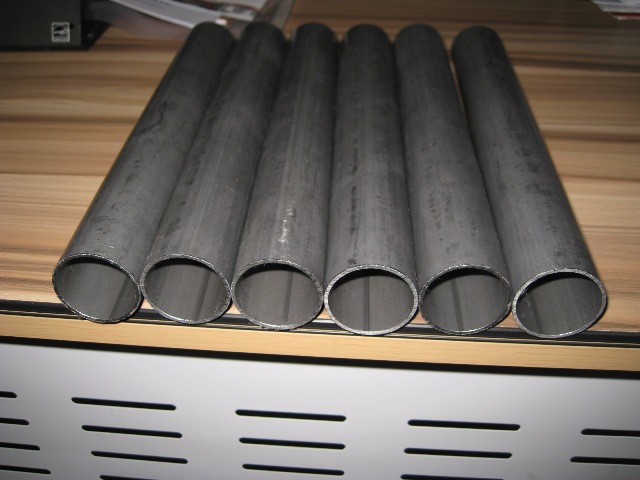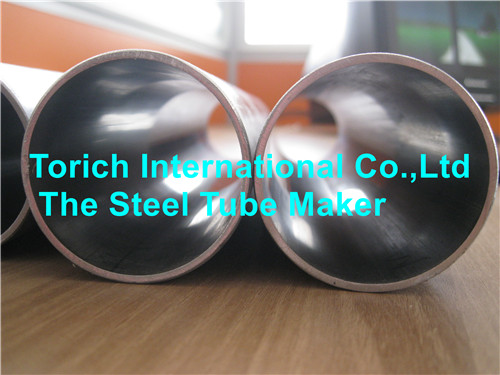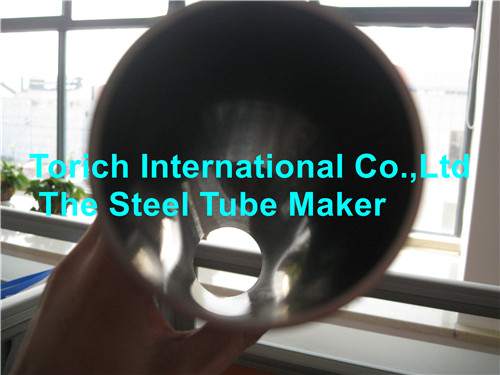Lens purchase rigid index 1, lens focal length: plan designer when considering the lens index needs to be based on the monitoring target position, distance, CCD specifications, and monitor the target on the monitor image effects and other comprehensive considerations to choose The most suitable focal length lens. For example, production line monitoring generally requires the monitoring of relatively close objects, and it requires a high level of definition. In this case, the fixed focus lens is generally better than the zoom, so the short focal length fixed lens is usually selected.
Such as 2.8mm, 4mm, 6mm, 8mm and so on. Another example is when monitoring indoor targets, the selected focal length will not be too large, generally will choose short focal length manual zoom lens, such as 3.0-8.2mm, 2.7-12.5mm; road monitoring, multi-lane monitoring to use a shorter focal length , Such as 6-15mm; crossroads of the traffic light license plate monitoring to use a correspondingly longer focal length, such as 6-60mm; city security monitoring generally use a focal length longer power zoom lens, such as 6-60mm, 8-80mm , 7.5-120mm, etc.; highways, railways, rivers, environmental testing, forest fire prevention, airports, borders, coastal defense, etc., generally use a variable focal length power zoom lens, such as 10-220mm, 13-280mm, 10- 330mm, 15-500mm and 10-1100mm.
2. Field of view Angle range: There is a formula for the calculation of the angle of field. Knowing the focal length of the lens, the size of the CCD, and the angle of view can be calculated. The lens has such a rule: the larger the focal length, the farther the monitoring is, the smaller the angle of view is; the smaller the focal length, the closer the monitoring distance, the larger the angle of view, and the inverse relationship between the focal length and the angle of view. For example, in some projects with a manual zoom lens, the field of view angle range is the first to be considered, so the selected focal length range is generally determined based on the angle of view field. The power zoom lens can control the zoom and focus by the keyboard at any time according to the scene environment, so the angle of field of view is not too much to consider. However, when the starting focal length of the power zoom lens is too large (for example, the initial focal length exceeds 20 mm), a wide range of monitoring cannot be achieved.
3. Lens aperture: The amount of light passing through the lens is measured by the ratio of the focal length of the lens to the clear aperture (F=f/D), marked with F. Each lens is marked with its maximum F-number, the smaller the F-number, the larger the aperture. For constant lighting conditions, fixed aperture lens can be used, this is generally a laboratory environment; for the environment where the illumination intensity changes is not obvious, manual iris lens is often used, that is, the aperture is adjusted to an ideal value and then fixed. If the illuminance changes greatly, 24-hour all-weather outdoor monitoring is required. The auto iris lens should be used.
Automatic iris lenses are divided into two categories: A type is called video (VIDEO) driven type, the lens itself contains the amplifier circuit, using the video amplitude signal from the camera into the aperture motor control. The other type is called a direct current (DC) drive type and uses the DC voltage on the camera to directly control the aperture. This lens contains only a galvanometer iris motor and requires an amplifier circuit inside the camera. For various types of auto iris lenses, there are usually two adjustable knobs, one is ALC adjustment (light metering adjustment), there are two options for the peak light metering and the average light metering according to the target light conditions, and the average light metering data is generally taken. The other is LEVEL adjustment, which makes the output image bright or dark. However, it should be noted that if the illumination is always non-uniform, such as when the contrast between the monitoring target and the background light is large, using an auto iris lens, the aperture motor may always be in a state of constant motion, and the monitoring effect is not ideal. In this case, it is generally required to implement the lens with the backlight compensation function of the camera, and the use of a wide dynamic camera also has a relatively good effect.
When the aperture of the lens reaches its maximum, its resolution is generally the highest. As for the reason, we can use a metaphor to explain: Assuming that the lens has 10,000 small holes to transmit light, the light source A is imaged as B. In the case of the maximum aperture, A formed through 10,000 holes is composed of 10,000 images. At a small aperture, there are only 100 holes in the lens that are open, so B has only 100 images; in a medium aperture, the value is about 2000, so the resolution is much higher than the small aperture at this time. But why don't we always use a large aperture to get the best resolution? This involves another lens - the depth of field. When the lens focuses on an object, the objects within a certain distance before and after the object (focus point) also have a relatively clear image, and the depth of field is a relatively clear range of distances. The aperture of the lens is inversely proportional to the depth of field. When there is a large aperture, there is almost no depth of field, and the background of the monitored image will be blurred. So the aperture of the lens is not as big as possible, but also depends on the monitoring environment.
4. Imaging circular dimensions of the lens: In the monitoring project, the imaging circular lens of the lens matched with the gun camera is generally 1/3 inch or 1/2 inch. The imaging circle of the lens should not be smaller than the camera's CCD size, otherwise black corners will appear. When cameras with the same focal length and different apertures match cameras of the same size, the monitored object distance and the obtained field of view angle are different. For example, in a 1/2-inch CCD camera, when the standard lens focal length is about 12mm, there is a 30-degree angle of view; in a 1/3-inch CCD camera, the standard lens focal length is about 8mm. Has a 30 degree field of view.
Finally, it is also necessary to consider the type of lens interface, lens interface and camera interface should be consistent. Currently, cameras and lenses are usually CS interfaces. CS cameras can be used with CS-type and C-type lenses. However, when connecting with a C-type lens, an adapter ring must be added between the lens and the camera. Otherwise, it may break. The protective glass of the CCD imaging surface causes damage to the CCD camera. C-cameras cannot be mated with CS-type lenses.
Lens optional optional index <br> <br> index lens options, if AS aspherical lens, infrared sensors (IR) camera, SD ED lens, megapixels HD camera, AF auto power zoom Focusing lens and so on. The following point by point to discuss.
1, AS aspherical lens AS aspheric technology everyone is no stranger. The modified spherical lens is an aspherical lens, which corrects the spherical aberration that is most likely to occur at the edge of the lens. Embodied in the monitoring image, that is to improve the imaging quality around the wide-angle image; and because a piece of aspherical surface can be equal to the effect of several spherical lenses, the reduction in the number of lenses will also reduce the chromatic aberration, increase the contrast of the image; and the lens The length will be reduced and it will be easier to make shorter shots. However, in order to increase the lightness as much as possible, the aperture of the lens will not generally become smaller, but the bigger the better the lens; again, the reduction in the number of lenses, the passage of light The loss of the lens will be much smaller, and it is also easier to make a larger flux of the lens, such as F0.98.
2, IR day and night conversion IR day and night lens uses a special addition of glass materials, to improve the infrared light band refraction and focusing rate, making it closer to the level of visible light refractive index, so infrared IR lens can be achieved during the day and night Focal surface, so that the monitoring screen is clear around the clock.
3, SD ultra-low dispersion lens SD ultra-low dispersion lens, because the glass uses a special material, is divided into FK01 and FK02 two levels, with high refractive and low dispersion characteristics, mainly for the visible light part of the light, can make color The image is sharp and sharp.
4, megapixel HD lens megapixel originally describes the number of pixels of the photosensitive element, and is now being used by lens manufacturers.
The lens itself has no pixel concept, but the resolution of the lens is good or bad. Some lens manufacturers express the resolving power of the lens with the black and white line logarithms expressed within the unit distance to distinguish the normal lens from the megapixel lens. Resolving power is the evaluation of a camera's resolution for detail capture. The camera with high resolution can record the line point block more delicately, and can also faithfully reflect the small changes in color.
However, this feature is not the same thing as sharpness. Sharpness generally refers to the degree of clarity of the edges of graphics, and the resolution is more about the level. As mentioned above, the fixed-focus lens imaging with the same focal length is generally better than the zoom lens. What is the good thing? The resolution of the fixed-focus lens is high. What is the reason? Because the lens design is simple, the number of lenses used is small, which can improve The contrast of the image reduces color aberrations. Application of AS aspherical lenses, SD ultra-low dispersion lenses can also improve the resolution of the lens.
The price of the manual zoom megapixel lens currently on the market is several times higher than that of the normal lens, plus some defects of the CMOS in the network camera, the increase of the data stream leads to insufficient transmission bandwidth, and storage problems. There is no way to massively popularize megapixels. However, the megapixel system can get a much higher image quality than the simulated image when the external conditions permit. After the video is intercepted and enlarged, the image is still clearly monitored. There is great potential in assisting the department to detect criminal cases.
5ã€Auto lens AF auto focus technology AF autofocus lens, through the built-in lens of the lens, sample and contrast the composite video signal given by the camera, give the conversion voltage of the brightness of the image, drive the focus motor scanning, scanning process The highest voltage is the target of the focus point. After 1-3 seconds of search response time, clear focus can be achieved. The autofocus lens is currently the most sophisticated application. Matching analog cameras and megapixel network cameras with both analog and network output signals can be implemented. For ordinary monitoring that needs to control PTZ rotation and zooming and focusing at the same time, the automatic focusing lens only needs to turn the direction of the PTZ to achieve clear monitoring, and the monitoring of the distant target can be achieved only by pulling the zoom button. The cumbersome monitoring process has truly enabled heart monitoring.
6, the lens through the dust through the fog function dust penetration fog is a security industry in the near future a more popular monitoring needs. When visible light passes through the smoke or mist in the air, it will be blocked from reflection and cannot pass. Therefore, the human eye that can only receive visible light cannot see the object behind the smoke and fog back door. The near-infrared light can bypass the smoke and fog and penetrate through the long wavelength, and the camera's photosensitive element can sense this part of the near-infrared light, so you can use this part of the light to achieve monitoring of dust through the fog.
Optional lens <br> <br> a comprehensive index, the same focal length, fixed focus lens effects in general are better than the resolving power of the zoom lens;
Second, although all-in-one machine is convenient, but the effect will be less than the gun plus the same focal length of the C / CS interface lens;
Third, do not blindly believe in the focal length and aperture value. The actual effect is hard truth. These things, especially the aperture, can not explain any problems. The reason can be found in the previous section. Not the same is 10-200mm or 10-300mm, the aperture index is also similar, then the effect is similar, often very different, not a good focal length and aperture indicators, the effect will be good, sometimes the situation is often the opposite, must be actual Look at the effect;
Fourth, pay special attention to the resolution of the lens at the telephoto segment. This is often the place where a camera's resolving power is most likely to be seen. Look at whether the imaging is sharp or not. Is it easy to focus?
Fifth, look at the work of the lens, whether the smooth zoom, the sound is great, the lens surface coating color is bright. These details can often be seen in the degree of intention of the manufacturer when making a lens;
Sixth, do not blindly believe in the propaganda of some manufacturers, such as what has the function of dust penetration and fogging, etc. In fact, the development of big shots has taken these factors into consideration, and it still needs to be determined by actual results. While choosing the lens that can be used, there is no need to spend more to purchase some of the manufacturers' gimmicks;
Seven, pay attention to the choice of focal length. There is a basic principle for the development of large lenses, and it is very good to be able to do wide angles while making large zoom ratios.
Conclusion <br> <br> security engineering, we should choose the right lens, in addition to hard targets popular attention, the optional index is also often the key to success or failure is determined. The above are just some personal views. If there are different opinions, please correct me.
TORICH is specialized manufacturer and supplier of DOM STEEL TUBE, DOM STEEL TUBING,DOM Tubing, DOM Steel Pipe.
DOM Steel Tubes, are produced with Cold Drawn Process based on ERW Steel Tubes, to achieve Good outside and inside surface,
the advantage of the production is better Concentricity and Ovality, to reduce deviation of Roundness of the steel tubes.
DOM Steel Tubing is also called Welded Cold Drawn Precision Steel Tubes.
Technical Standard:
ASTM A513 Type5, Type 6, SSID
EN10305-2
SAE J525
Products Application:
Oil Cylinders
Air Cylinder,
Automotive Cylinder Liners
Jack Lifting
Telescopic Systems
Pneumatic Cylinders
Gas Spring Cylinders
Race Car Frames
Roll Cages
Motorcycle Frames
Spindles
Rollers
Shafts
Bushings
Clinders, Bore Cylinders
Size range is:
O.D. 4-350mm,
W.T. 0.5-30mm,
Length: according to customer`s requirement and agreement




DOM Round Steel Tube, is a ERW welded mechanical round steel tube with the internal weld seam removed achieving a smooth internal surface.
DOM round steel tube has been drawn over a mandrel and die to produce a tube having more accurate dimensional tolerances, and a very smooth inside and outside finish. DOM round steel tube is ideal for more stressful applications requiring higher quality, increased mechanical properties, uniformity, strength, and soundness.
DOM Steel Tubes
DOM Steel Tubes,Welded Steel Tube,DOM Seamless Steel Tubes,DOM Steel Pipe
Torich International Co.,Ltd--The Steel Tube Maker , http://www.chinasteeltubepipe.com